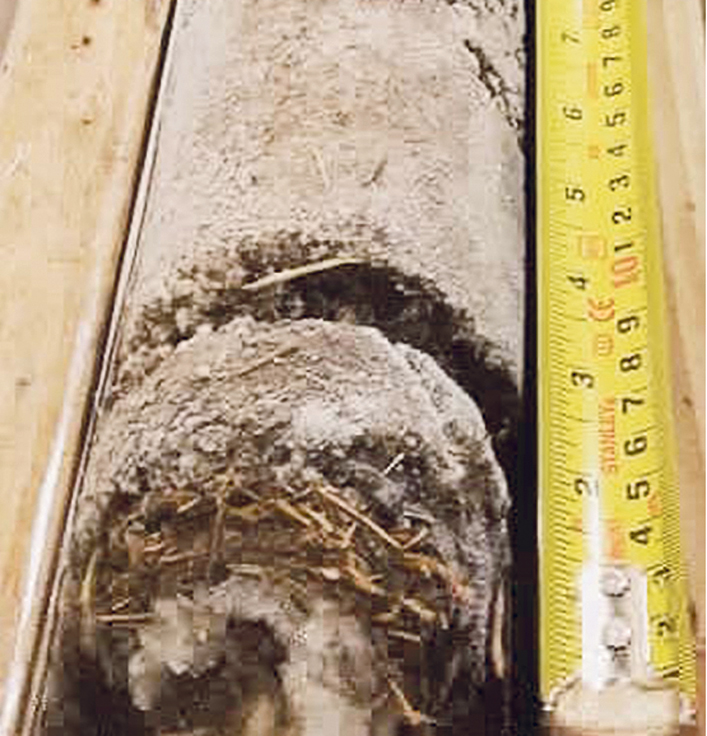We’ve all seen a solid rock that’s been seamlessly broken in two by some invisible force. The movement of rocks and soil are controlled by freeze and thaw events, creating mounds, organizing rock circles and cracking the rocks themselves. These phenomena are macro views of the freeze-thaw cycle that naturally occurs in soil.
As demonstrated by ice ridges on a lake, water expands when it freezes and forces ice up into ridges. The freeze-thaw cycle in soil pushes subterranean rocks to the surface of the Earth, bringing along fresh minerals. Visible changes on the surface hint at small changes deeper in the ground. Winter soil freezes, heaves and moves things. Freezing deforms soil. It will continue doing so forever.
Read Also

Farm groups ask feds for export sales reporting
The Agricultural Producers Association of Saskatchewan and SaskCrops asks the federal government to create an Export Sales Reporting program.
But the icy drama doesn’t stop with what the human eye sees. The cracks, freezing and expansion can occur on a tiny scale as well. This not only releases minerals, it further changes the soil’s composition.
This natural freeze-thaw phenomenon is the subject of study for Erin Rooney, graduate fellow at Oregon State University.
Rooney looks at the freeze-thaw cycle, how it changes soil on a microscopic level and the reaction of Alaska’s unique permafrost soils. The Alaskan permafrost is under scientific scrutiny because it holds an estimated 40 percent of Earths terrestrial organic carbon.
“There are microscopic changes occurring. My research at Oregon State University is looking at the impact the increasing frequency of freeze-thaw cycles may have on Alaskan soils.
“The soil’s ability to continue storing carbon below ground will depend on its resilience to changes in the climate. These changes include increasing variability in winter air temperature and the resulting increase in freeze-thaw cycles.”
Water, ice and the freeze-thaw cycle has been crucial to shaping landscapes around the globe. Soil is made up of four main components: minerals that come from rocks, organic matter from plants and animals that use the soil, living organisms that reside in the soil and pores with or without water.
Alternating freezing and thawing of rock, soil and water is crucial to the development of soil. It takes a while for soil to freeze after winter sets in. At an air temperature of 0 C, the ground isn’t frozen yet. By mid-winter, it’s usually frozen to great depths, particularly where there’s permafrost within one to two metres of the surface.
Any mixture of frozen rock, soil and water is classified as permafrost, as long as the material remains frozen for at least two consecutive years.
Permafrost has a huge impact on soil temperature, cooling from the bottom up.
Alaska contains many permafrost-affected landscapes.

As winter cold penetrates the soil, water stored within soil pores first contracts and then expands as liquid water crystallizes into ice. As temperature acts on soil, from either the atmosphere above or the underlying permafrost below, the soil doesn’t just solidify like an ice cube. Nor does it thaw evenly like an ice cube.
Very tiny pores in the soil keep some water in a liquid state during freeze up. Ice crystals attract this liquid water, resulting in the growth of ice lenses similar to lenses in a pair of eyeglasses. Movement of soil water toward the ice lenses causes soil dehydration, resulting in soil contraction and bigger pores. Simultaneously, growth of ice lenses results in localized expansion. The cracks that appear during this process grow in girth and depth during the thaw season. The following winter, the process is repeated with additional freezing and expansion.
Frost heaving pushes the lower mineral horizons up through the soil toward the surface.
This process is called mud boil or frost boil.
In the spring, organic-rich surface horizons thaw earlier than the subsurface horizons, so they can be swirled down through the empty pores into lower horizons.
This fills the cracks left behind by the soil contraction which was caused by dehydration during freeze up. For the scientifically minded, this process of horizons moving up and down throughout the profile is called cryoturbation.
Examining core samples through a microscope shows that cracks formed by freezing and expansion of water are very small. Cracks in the minerals within rocks are called mineral weathering.
As ice expands, it breaks off many small particles of the rock down to the mineral level. When temperatures warm in the spring, these small particles and minerals are released into adjacent soil.
This freeze-thaw process defines the soil and minerals that serve as vital nutrients to living organisms.
















